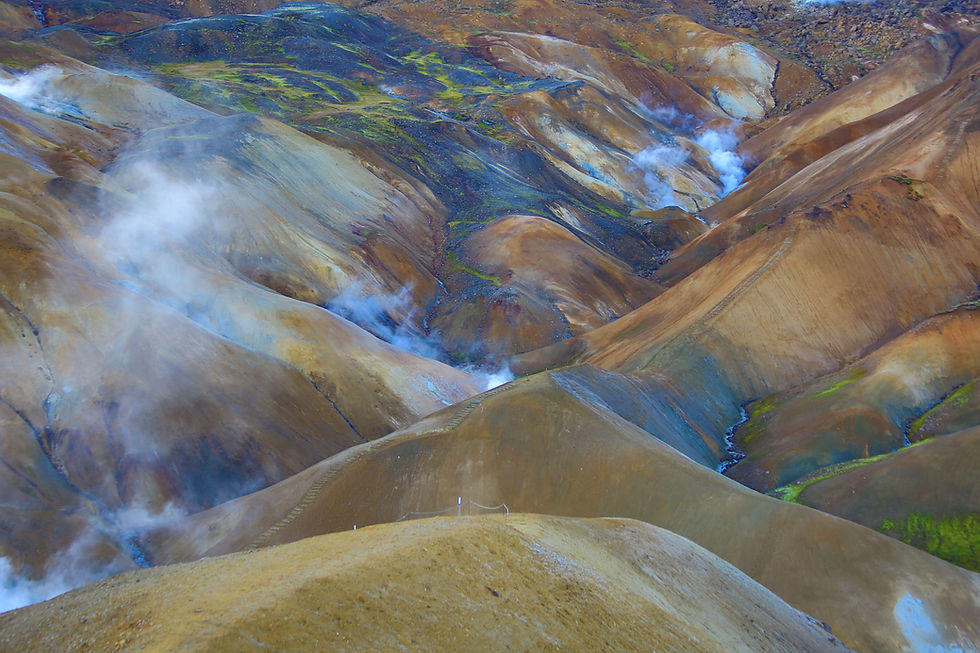Mangorei Track To Pouakai Tarn, New Plymouth, NZ
- Dec 19, 2019
- 3 min read
Updated: Dec 31, 2022
One of the most spectacular and most photographed volcano on the North Island of New Zealand is Mt. Taranaki. In fact, Mt. Taranaki stood in as the backdrop for Mt. Fuji of Japan during the filming of The Last Samurai. Today, it lays as a dormant stratovolcano, and is a poster boy for New Zealand.

At the end of Mangorei Road in New Plymouth is where we started our hike to a tarn which is located on a saddle between the Pouakai Hut and Mt. Maude. As expected, the kiwis take a lot of pride and care of their beloved trails. The Mangorei Track is no different. In fact, this particular track takes it up a notch, with the entire track built on a boardwalk, from start to finish.
The track climbs steadily through a wet montane forests, where every square inch of the trees and the ground which it grows from are covered in moss. The initial part was quite soggy, but the meshing in placed help hikers to avoid stepping into deep mud holes. Not yours truly though. The bog almost swallowed my left pair!
The surrounding mossy forest seemed to depict a scene that is directly from Lord Of The Rings. I wouldn't be surprised if a leprechaun or Gollum would jump out from the thicket to scare us!
The boardwalk helps trampers avoid slogging through thick mud and instead, provides a dry and level ground to tramp on. The boardwalk is a welcoming feature for those who love to climb well-spaced steps but it is a nightmare for those who are out of shape.
The climb itself is relentless; as it is a constant up from the road to the top. Along the way, there were a number of improvised benches for those who needed a short break. It certainly was a welcomed sight!

Towards the top, we caught our first glimpse of the open view; this one showing us the forest down slope to the ocean. We could see New Plymouth's Paritutu Rock in the distance along with the unmistakable outline of the refinery.

In about an hour from our start, the track breaks out up on top of an open windswept ridge, where the vegetation changes to low shrubs. Swaths of these shrubs are bent out of shape due to being exposed to the strong wind.
It was also in this section that we found a number of stream crossings via wooden bridges. The mountain seems to be pouring water!
Soon we spotted the hut perched behind the saddle where it is protected from the elements. We stopped briefly at the hut to put on our windbreakers, as well as to snap a few photos. It was nice and warm inside; though completely empty. I guess no one was staying here tonight.
We then continued up the track and popped out onto the saddle with no view of Mt. Taranaki. The elusive mountain was shrouded behind a thick wall of clouds! With no mountain in sight, we then decided to proceed further down the saddle to a set of alpine tarns. We passed by many signs indicating that this bog is on a fragile ecosystem and is a protected area. Camping is prohibited.
The tarn is a well known spot to photographed Mt. Taranaki and it's reflection on the water on a calm day. However, it was not to be for us today as the winds were blowing consistently over the saddle.
Further, Mt. Taranaki was teasing us! It would show its summit for but just a brief moment before the clouds covered it again. We waited to see if it would blow over, but it continued to tease...
The winds made it pretty cold and soon we gave up and decided to return to the saddle. While we paced steadily back to the saddle, the clouds finally open up and we managed to capture Mt. Taranaki in all its splendor! This ice-capped mountain and its peak is so symmetrical that it seems like as though we were looking at a painting.
Although we tracked the hike at approximately 8.6 miles return, with an elevation gain of 2,641 feet, it didn't feel like a slog. The surrounding nature truly distracts one from any feeling of tiredness and soreness. This is truly a gem for the people of New Zealand and for those lucky enough to visit!




































































Comments